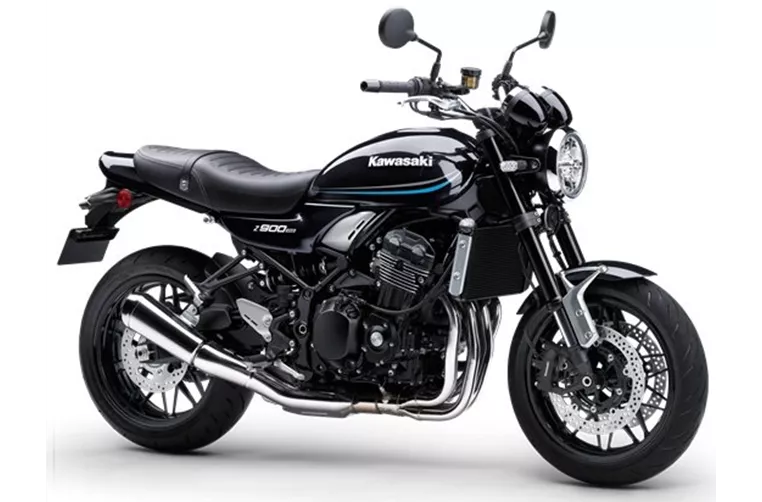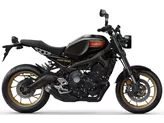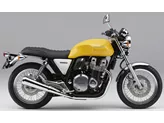Kawasaki Z900 2019 vs. Kawasaki Z900 RS 2022

Kawasaki Z900 2019
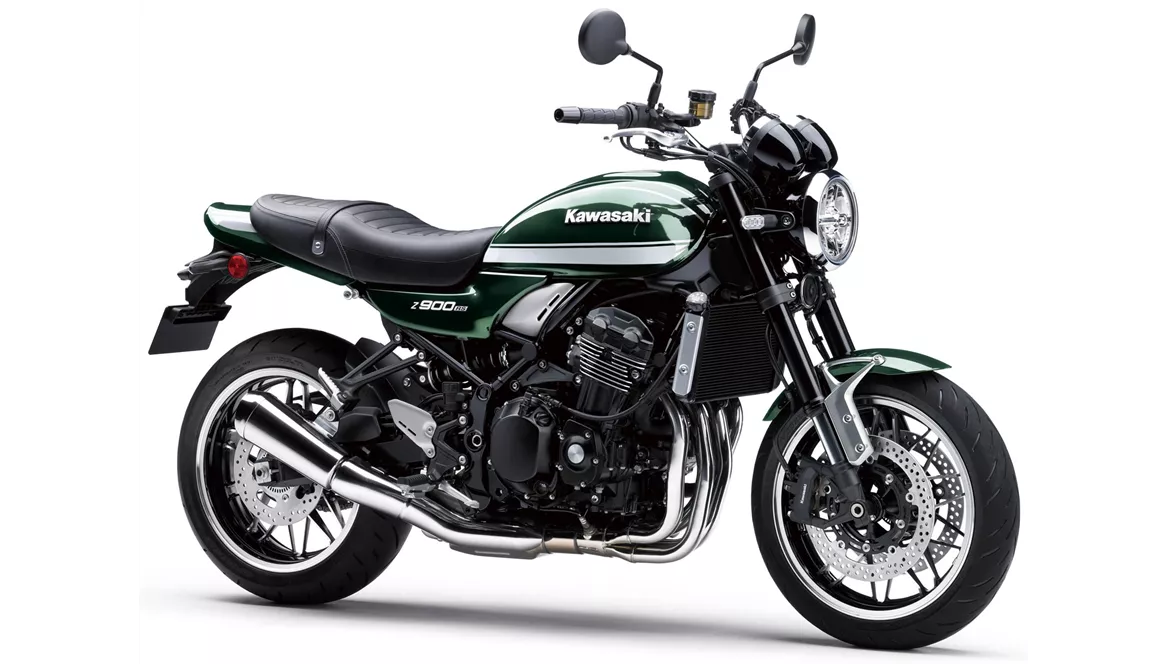
Kawasaki Z900 RS 2022
Overview - Kawasaki Z900 2019 vs Kawasaki Z900 RS 2022
The Kawasaki Z900 model year 2019 and the Kawasaki Z900 RS model year 2022 both belong to the naked bike category and share many similarities in terms of technical specifications. Both bikes are equipped with a 948cc inline four-cylinder engine that delivers a torque of 98.6 Nm. They also feature a liquid cooling system and fuel injection for optimal performance.
In terms of power, the Z900 2019 has a slight advantage with an engine power of 125.4 HP, while the Z900 RS 2022 has a power output of 111 HP. However, both bikes offer a smooth and powerful engine that provides a thrilling riding experience.
Both models feature an upside-down telescopic fork for the front suspension, providing excellent handling and stability. The Z900 RS 2022 offers additional adjustment options for compression, preload, and rebound, allowing riders to fine-tune the suspension to their preferences. The rear suspension consists of a swing arm and a monoshock, with preload and rebound adjustment available on both models. The Z900 RS 2022 also features an aluminum rear suspension, which enhances the bike's overall performance.

Kawasaki Z900 2019
In terms of the chassis, both bikes have a steel frame, but the Z900 2019 has a double cradle frame, while the Z900 RS 2022 features a tubular frame. Both frames provide excellent stability and control.
Braking performance is similar on both models, with double disc brakes on the front and four-piston calipers. The front brake discs have a diameter of 300 mm, ensuring powerful and reliable stopping power. The Z900 RS 2022 also offers the addition of traction control, enhancing safety and control during acceleration and cornering.
In terms of dimensions and weights, there are slight differences between the two models. The Z900 RS 2022 has a slightly longer wheelbase of 1470 mm compared to the 1450 mm of the Z900 2019. The seat height of the Z900 RS 2022 is also higher at 835 mm, providing a more upright and comfortable riding position. However, the Z900 2019 has a lower curb weight of 210 kg compared to the 215 kg of the Z900 RS 2022.
Both bikes offer a stylish and attractive design, but the Z900 RS 2022 stands out with its retro-inspired design elements. It features analogue displays, adjustable levers, and a comfortable seating position, enhancing the overall riding experience.
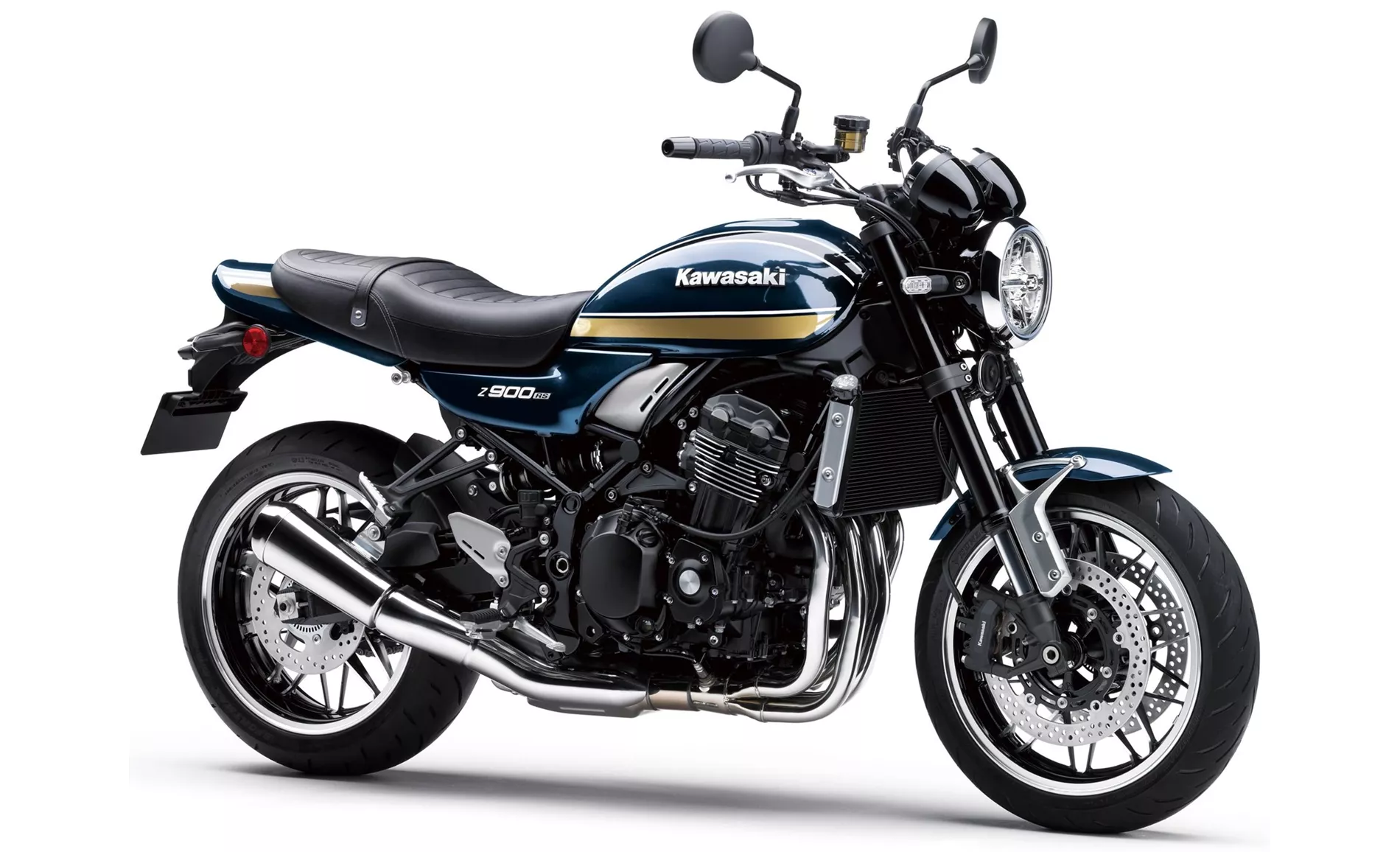
Kawasaki Z900 RS 2022
In terms of weaknesses, the Z900 2019 has a TFT display mounted too low, which may require riders to take their eyes off the road to check information. The menu operation on the display can also be cumbersome. The rearview mirrors on the Z900 2019 offer modest visibility, which can be a drawback in terms of safety.
On the other hand, the Z900 RS 2022 does not offer an optional quickshifter, which may be a disappointment for riders who prefer quick and seamless gear changes.
Overall, both the Kawasaki Z900 2019 and the Kawasaki Z900 RS 2022 offer impressive performance, handling, and design. The Z900 2019 excels in terms of engine power and price, while the Z900 RS 2022 stands out with its retro design, additional adjustment options, and traction control. Riders can choose between these two models based on their preferences and priorities.
Technical Specifications Kawasaki Z900 2019 compared to Kawasaki Z900 RS 2022
Pros and Cons in comparison
Pros and Cons in comparison
Kawasaki Z900 2019

Fortunately, the new Kawasaki Z900 has lost none of its character through the use of electronics. It is and remains a playful mid-range naked bike, which at the same time masters the brisk pace on the country road magnificently. The riding pleasure and suitability for everyday use are high, the now installed riding aids offer a plus in safety. Your opponents will have a really hard time from now on.
Kawasaki Z900 RS 2022
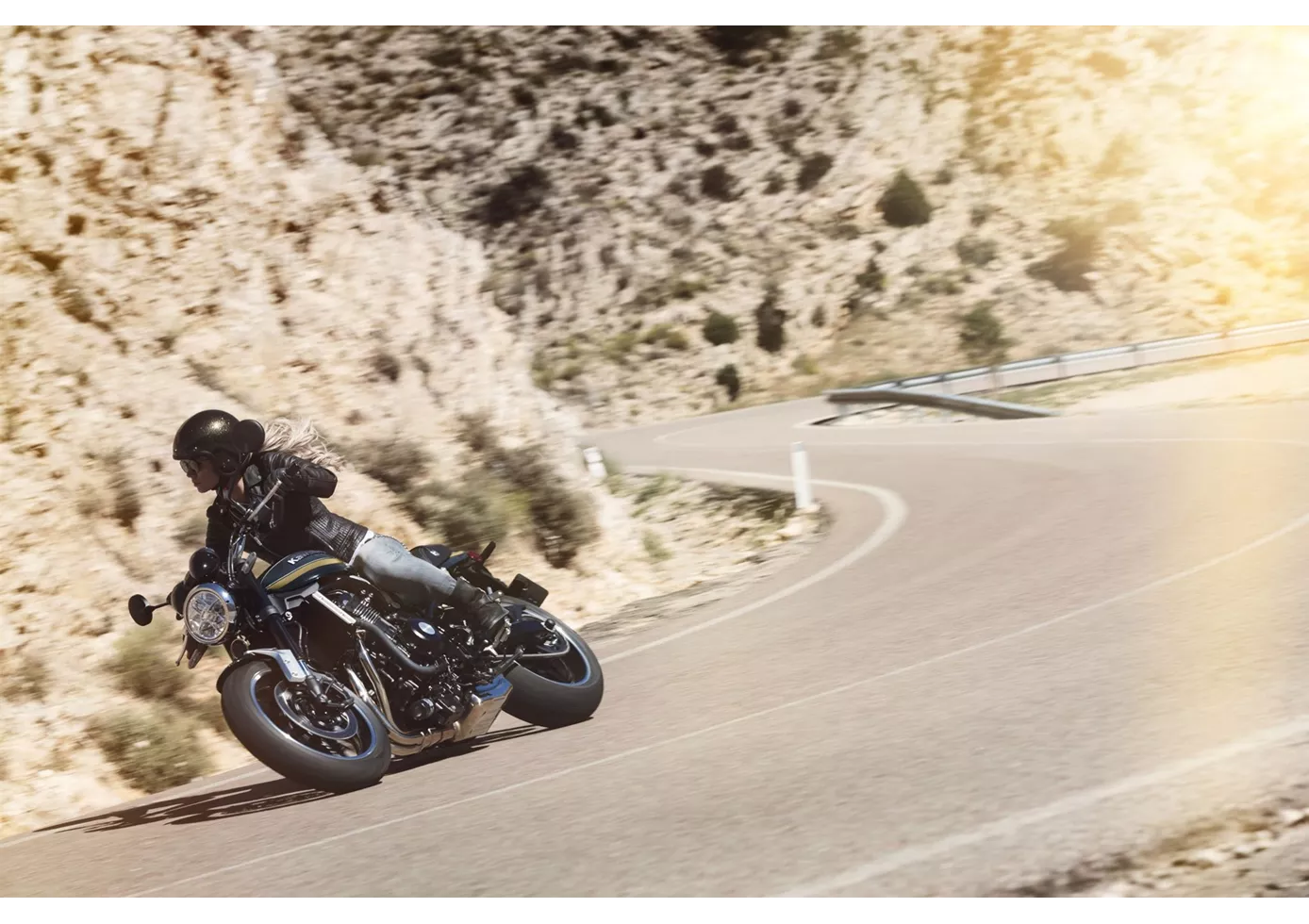
The Z900 RS enjoys a large fan base and in 2022 it once again proves why it is so popular. The powerful engine scores with pulling power and a wonderful sound that is not too obtrusive. The handling feels natural and presents no challenges. Only a quickshifter would suit the bike - even if that doesn't quite fit the retro idea.
Price Comparison Avarage Market Price Kawasaki Z900 vs Kawasaki Z900 RS
There are a few key differences between a Kawasaki Z900 2019 and a Kawasaki Z900 RS 2022. In terms of price, the actual average price of a Kawasaki Z900 RS 2022 is about 27% higher. Compared to Kawasaki Z900 RS 2022 there are more Kawasaki Z900 2019 bikes available on the 1000PS.de Marketplace, specifically 40 compared to 22. It takes less time to sell a Kawasaki Z900 with 116 days compared to 127 days for a Kawasaki Z900 RS. Since model year 2017 1000PS.de editors have written 46 reviews for the Kawasaki Z900 and 26 reviews for the Kawasaki Z900 RS since model year 2018. The first review for the Kawasaki Z900 was published on 11/11/2016 and now has more than 93,200 views. This compares to more than 63,700 views for the first review on Kawasaki Z900 RS published on 9/6/2017.

